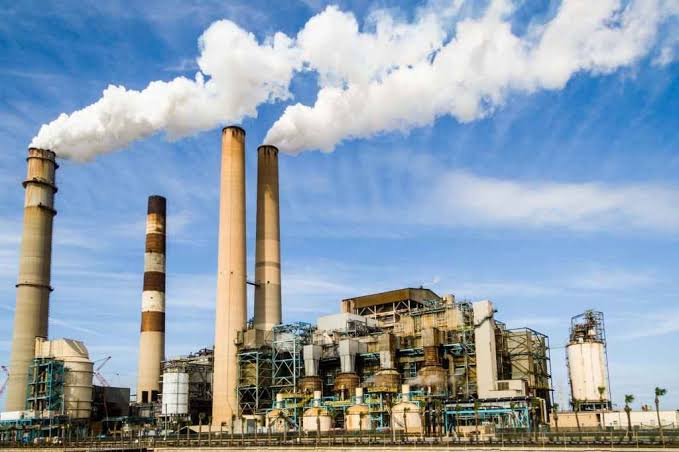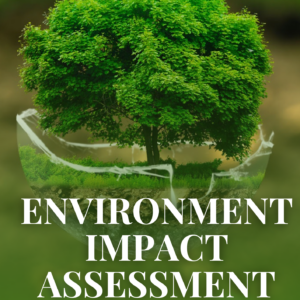Environmental degradation, climate change, and resource depletion have pushed regulators and businesses to rethink how industries operate. The manufacturing sector, often associated with emissions, effluents, and resource-intensive operations has become a primary focus of environmental scrutiny.
Environmental auditing is a critical tool to ensure compliance, minimize environmental harm, and promote sustainable production. In this post, we explore what environmental auditing entails in the manufacturing industry, why it’s important, what to look for, how compliance is determined, and the key regulations that govern the process.
What Is an Environmental Audit?
An Environmental Audit (EA) is a systematic, documented, and objective process of assessing how well a facility, operation, or system complies with environmental laws, regulations, and internal policies. It goes beyond mere compliance, audits aim to identify opportunities for improvement, pollution prevention, and resource efficiency.
According to the International Chamber of Commerce (ICC), an environmental audit “addresses the management of environmental practices and assesses the impact of activities on the environment.”
Related posts:
- Differences Between Environmental Impact Assessment (EIA) and Environmental Audit (EA) in Kenya.
- Why Your Business Needs an Environmental Audit (EA).
Why Conduct Environmental Audits in Manufacturing?
1. Regulatory Compliance
Audits ensure the facility is adhering to environmental laws such as:
- Environmental Management and Coordination Act (EMCA), 1999 (Kenya)
- Environmental Impact Assessment and Audit Regulations, 2003
- Waste Management Regulations, 2006
- Water Quality Regulations, 2006
- Air Quality Regulations, 2014
- Noise and Excessive Vibration Pollution Regulations, 2009
2. Risk Mitigation
Identifies and addresses risks related to pollution, accidents, fines, or shutdowns.
3. Operational Efficiency
Uncovers inefficiencies in energy, water, and raw material use, which can reduce costs.
4. Stakeholder Trust
Demonstrates accountability and environmental responsibility to investors, customers, and regulators.
5. Sustainability and ESG
Supports Environmental, Social, and Governance (ESG) goals and sustainability reporting frameworks like GRI, CDP, or ISO 14001.
What Should an Environmental Auditor Look For?
Auditing a manufacturing industry requires a deep and structured approach across various environmental components. Below are key areas of focus:
1. Legal and Regulatory Compliance
- Permits and Licenses: Ensure valid licenses from NEMA such as:
- Environmental Impact Assessment (EIA) License
- Effluent Discharge License (EDL)
- Air Emissions License
- Waste Transport and Disposal Permits
- Sectoral Guidelines: Compliance with local regulations and sector-specific requirements.
- Record-Keeping: Availability of environmental monitoring records, complaints logs, and previous audit reports.
Cited: Environmental Management and Coordination Act (EMCA), 1999
2. Waste Management
- Types of Waste: Solid (general, industrial), liquid, hazardous.
- Segregation: Color-coded, clearly labeled bins.
- Storage: Secure, covered, and with spill containment.
- Disposal: Use of licensed waste handlers and accurate tracking of waste movement.
- Documentation: Waste transfer notes, manifests, and contractor licenses.
Cited: Environmental Management (Waste Management) Regulations, 2006
3. Effluent Management
- Source Identification: All discharge points and the nature of effluents (cooling water, process water, cleaning wastewater).
- Effluent Discharge License (EDL): Must be valid and aligned with discharge activities.
- Testing: Regular analysis of parameters such as BOD, COD, pH, TSS.
- Treatment: On-site Effluent Treatment Plant (ETP) or off-site treatment; visual and documentary evidence of operation and maintenance.
Cited: Water Quality Regulations, 2006
4. Air Emissions
- Emission Points: Stacks, chimneys, and fugitive emissions.
- Air Quality Monitoring: Particulate matter, SOx, NOx, VOCs measured periodically.
- Control Measures: Scrubbers, filters, baghouses.
- Stack Height and Dispersion: Designed to meet regulatory standards.
📚 Cited: Air Quality Regulations, 2014
5. Noise Pollution
- Noise Sources: Machinery, generators, transport vehicles.
- Monitoring: Noise level assessments against decibel limits.
- Mitigation: Acoustic enclosures, personal hearing protection, restricted operation hours.
📚 Cited: Noise and Excessive Vibration Pollution Control Regulations, 2009
6. Energy Management
- Energy Audit: Conducted periodically to assess consumption patterns.
- Energy Sources: Electricity, diesel, solar, etc.
- Efficiency Initiatives: Use of energy-efficient motors, lighting (LED), VFDs.
- Generator Use: Storage of diesel, emissions control, noise insulation.
7. Water Use and Conservation
- Sources: Municipal, borehole, surface water, rainwater.
- Permits: Borehole abstraction permits from Water Resources Authority (WRA).
- Usage Tracking: Meters installed and readings logged.
- Conservation: Low-flow devices, water recycling, awareness programs.
8. Occupational Health & Environmental Safety
- Personal Protective Equipment (PPE): Availability, use, and training.
- Emergency Response: Fire extinguishers, spill kits, alarm systems.
- Training and Awareness: Regular training on spills, waste handling, and emergencies.
- Incident Records: Logs of accidents, near-misses, and responses.
9. Environmental Documentation
- Environmental Policy: Displayed, signed by top management.
- Audit Reports and Corrective Action Plans (CAPs): Available and implemented.
- Community Complaints Register: Records of complaints and responses.

How Does Compliance Look Like?
A compliant facility typically:
- Holds up-to-date environmental licenses and permits.
- Keeps monitoring records and test results.
- Has trained personnel and functional environmental committees.
- Demonstrates good housekeeping and environmental controls.
- Responds promptly to incidents and implements CAPs.
- Can show progressive improvement in its environmental performance.
Non-compliance can lead to:
- Fines and penalties
- Suspension or revocation of licenses
- Legal action by NEMA or other agencies
- Loss of reputation and market share
How to Conduct the Audit
- Pre-Audit Preparation
- Review past audit reports
- Understand applicable regulations
- Prepare a customized checklist
- Site Visit and Inspection
- Conduct interviews with staff
- Inspect all operations, storage, discharge points
- Take photos and notes
- Review Documentation
- Permits, licenses, policies
- Monitoring and training records
- Incident and complaint logs
- Report Writing
- Structure the report into findings, legal references, and recommendations
- Attach a Corrective Action Plan (CAP) table
- Follow-up
- Revisit site or request CAP progress updates
- Advise on areas for continuous improvement
Conclusion
Environmental auditing in manufacturing is not just a compliance exercise, it’s a strategic tool to reduce risks, enhance efficiency, and promote sustainability. By following a structured and detailed audit process, auditors and organizations can identify environmental liabilities, improve operational controls, and meet their legal and social obligations.
Manufacturing facilities that proactively embrace environmental audits are not only better prepared for inspections, they are also well-positioned for long-term success in a resource-constrained and regulation-driven world.




